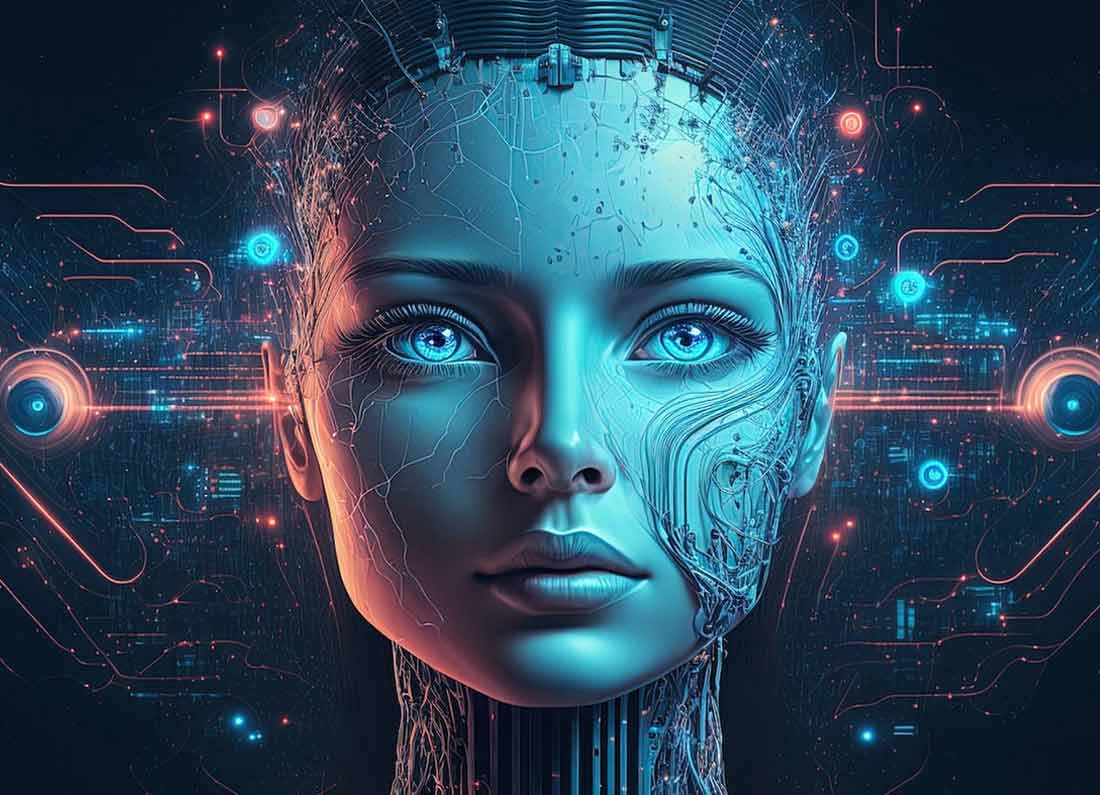Artificial Intelligence, Machine Learning, and Natural Language Processing: The Next Big Research Frontier
Artificial intelligence (AI), machine learning (ML), and natural language processing (NLP) have reshaped the technological landscape, offering capabilities that were once the realm of science fiction. Together, these technologies empower systems to perform complex tasks, make data-driven decisions, and interact with humans in a more natural and intuitive manner. This article explores the evolution of AI, ML, and NLP, their current applications, and the potential for groundbreaking research that could define the next era of innovation.
Artificial Intelligence: The Foundation
Artificial intelligence is the overarching field dedicated to creating systems that mimic human intelligence. It encompasses subfields like ML, NLP, robotics, and computer vision. AI’s roots can be traced to the mid-20th century, but recent advancements in computational power, data availability, and algorithms have accelerated its development.
Key Components of AI
- Reasoning: The ability to solve problems and make decisions.
- Learning: Systems that adapt based on data inputs.
- Perception: Interpreting sensory information, such as images or sounds.
- Interaction: Communicating with users or other systems.
Modern AI is categorized into three levels:
- Artificial Narrow Intelligence (ANI): Specialized systems like recommendation engines or chatbots.
- Artificial General Intelligence (AGI): Hypothetical systems capable of human-like reasoning across diverse tasks.
- Artificial Superintelligence (ASI): A theoretical future stage surpassing human intellect in all domains.
Machine Learning: The Engine of AI
![]()
Machine learning is a subset of AI that enables systems to learn patterns from data and improve over time without explicit programming. It is the driving force behind most modern AI applications.
Types of Machine Learning
- Supervised Learning: Training systems using labeled datasets. Example: Fraud detection in banking.
- Unsupervised Learning: Finding patterns in unlabeled data. Example: Customer segmentation in marketing.
- Reinforcement Learning: Learning optimal actions through trial and error. Example: Self-driving cars.
Key Algorithms in ML
- Linear regression, decision trees, and support vector machines for supervised tasks.
- Clustering algorithms like K-means and hierarchical clustering for unsupervised learning.
- Deep reinforcement learning, combining neural networks with reinforcement techniques, has shown promising results in robotics and game-playing systems.
Applications of Machine Learning
- Predictive analytics in healthcare.
- Personalized recommendations on streaming platforms.
- Automated quality checks in manufacturing.
Natural Language Processing: Bridging Human and Machine Communication
NLP focuses on enabling machines to understand, interpret, and respond to human language. It combines computational linguistics with machine learning techniques.
Core Tasks in NLP
- Text Processing: Tokenization, lemmatization, and parsing.
- Sentiment Analysis: Determining emotions in text.
- Machine Translation: Systems like Google Translate.
- Conversational AI: Chatbots and virtual assistants like Siri and Alexa.
Technological Foundations
The development of large language models (LLMs), such as OpenAI’s GPT and Google’s BERT, has revolutionized NLP. These models are trained on vast datasets and can perform multiple tasks, from writing essays to generating code.
Challenges in NLP
- Bias in training data leading to unfair outcomes.
- Understanding context and ambiguity in human language.
- Real-time processing for multilingual and multicultural environments.
The Next Big Research Directions
1. Explainable AI (XAI)
One of the primary concerns with AI, particularly in ML and NLP, is the lack of transparency. Explainable AI focuses on creating models that humans can interpret, ensuring accountability and trust.
2. Ethical AI Development
AI systems are increasingly scrutinized for ethical concerns, such as privacy violations and biases. Future research will prioritize developing guidelines and frameworks to ensure fairness and inclusivity.
3. Multimodal AI
Combining different types of data, such as text, images, and audio, is a promising area. Multimodal AI could significantly enhance applications in healthcare, entertainment, and accessibility technologies.
4. Federated Learning
Decentralized machine learning models that operate without transferring raw data to a central server ensure data privacy and security. This approach is particularly important in sectors like healthcare and finance.
5. Advanced Generative Models
The success of Generative Adversarial Networks (GANs) and large language models like GPT hints at a future where AI can create more realistic simulations, digital art, and even design drugs.
6. AI in Climate Science
Using AI to predict and mitigate climate change impacts is gaining traction. ML models are being used to optimize renewable energy systems, predict natural disasters, and improve resource management.
7. Human-Machine Collaboration
Future AI systems will be designed to work seamlessly alongside humans, complementing their abilities rather than replacing them. This includes applications in education, creativity, and mental health support.
8. Quantum AI
The integration of quantum computing with AI has the potential to solve problems currently beyond classical computing’s capabilities, such as complex molecular simulations and cryptography.
Impact on Global Economy and Society
Economic Growth
AI-driven automation is projected to contribute trillions to the global GDP by 2030. Industries like retail, logistics, and manufacturing will see significant productivity gains.
Workforce Transformation
While AI will create new job opportunities, it will also displace roles requiring repetitive tasks. Emphasis on reskilling programs will be crucial.
Healthcare Advancements
AI has already demonstrated its potential in early disease detection, drug discovery, and personalized medicine, promising improved outcomes and reduced costs.
Ethical and Regulatory Challenges
As AI becomes more integrated into society, robust governance frameworks will be needed to address ethical dilemmas and ensure equitable benefits.
Conclusion
Artificial intelligence, machine learning, and natural language processing have already transformed the way we live and work. As research pushes boundaries into areas like explainable AI, ethical guidelines, and quantum computing, these technologies promise a future where humans and machines coexist harmoniously, solving some of the world’s most pressing challenges. However, achieving this vision will require collaborative efforts between governments, industry leaders, and researchers to navigate the ethical, technical, and societal complexities that lie ahead.










Leave a Reply